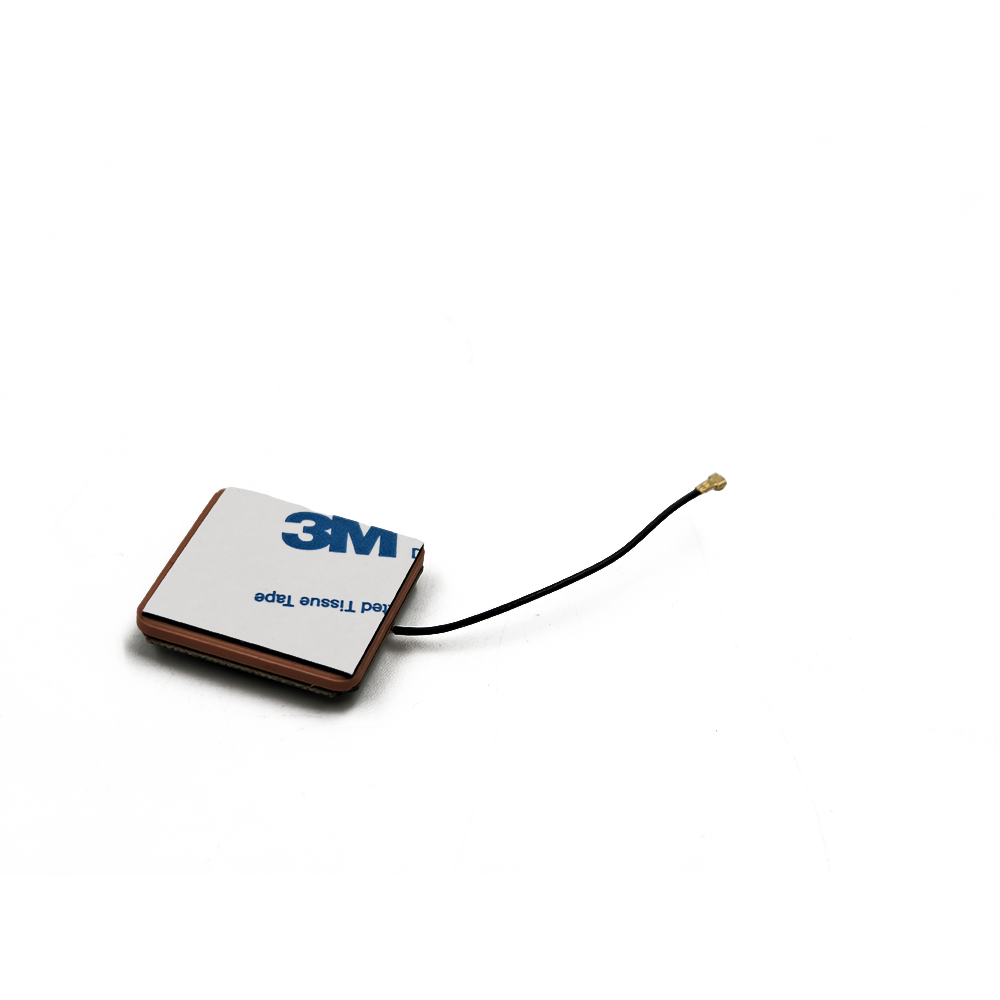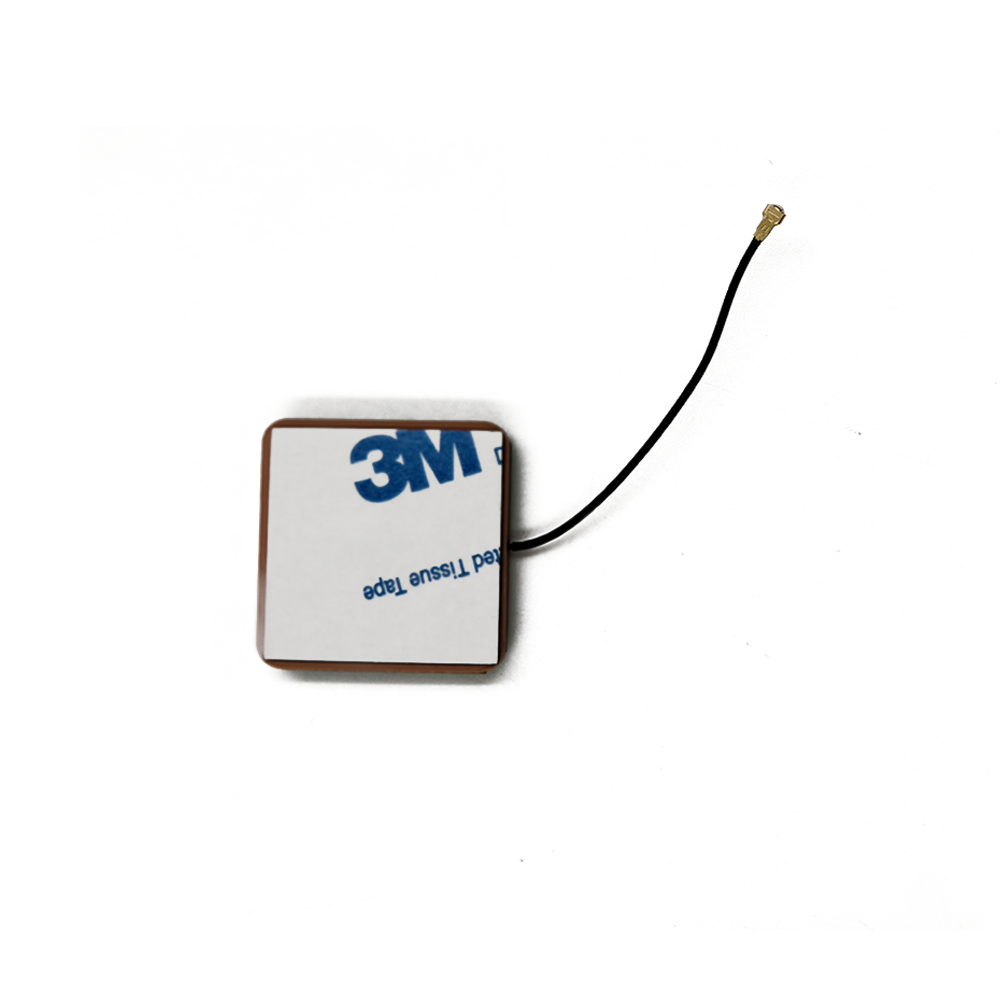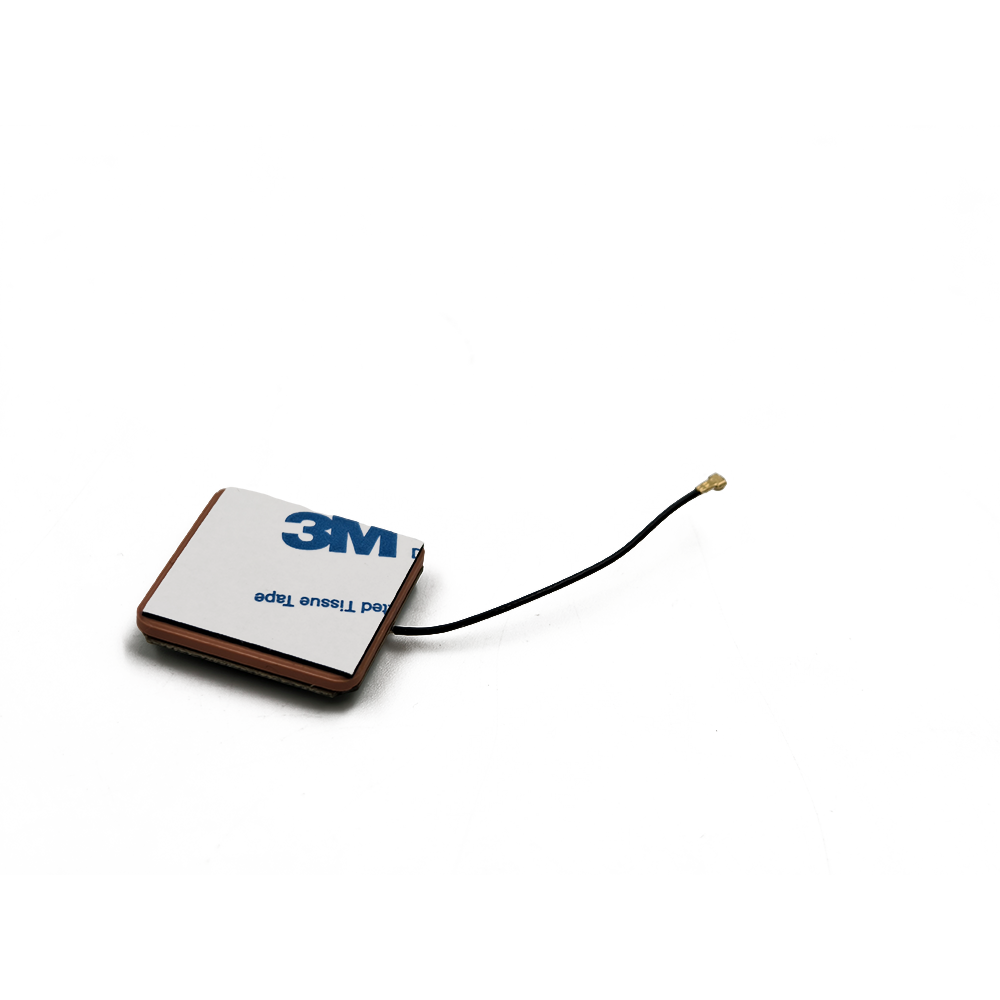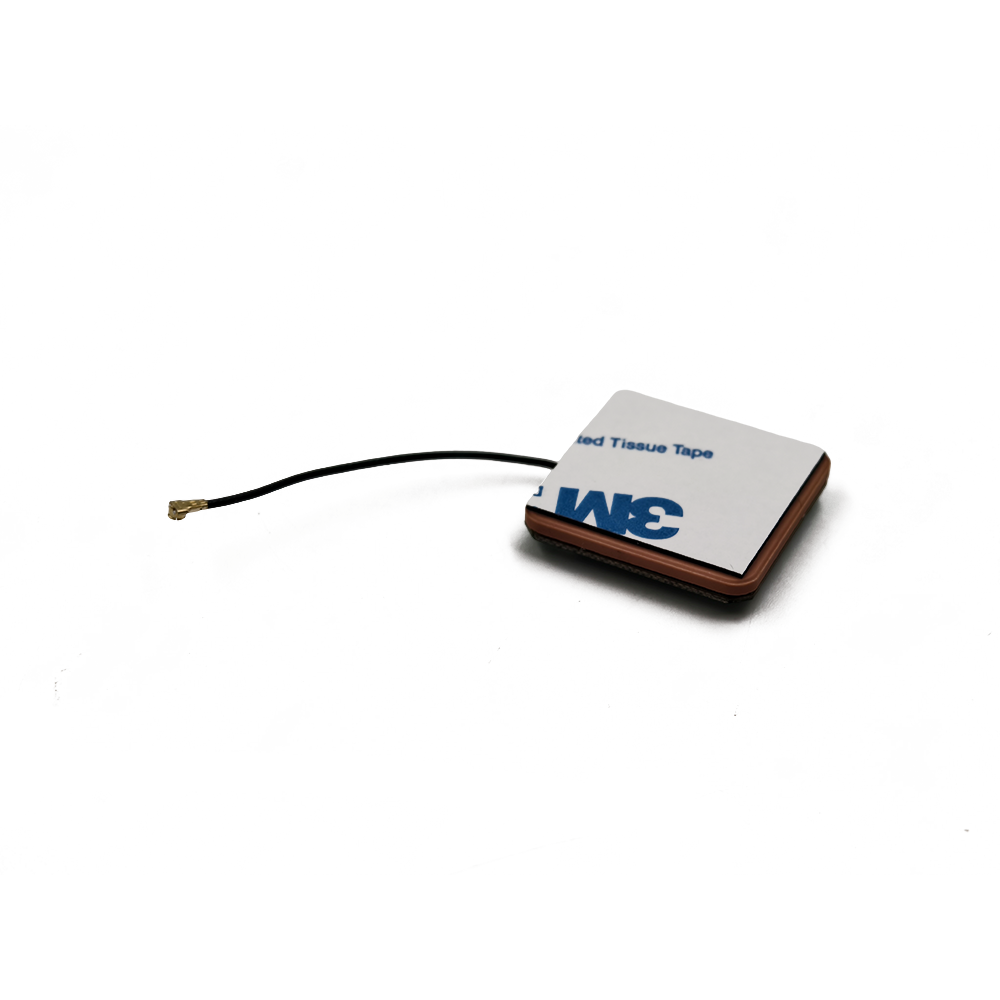Integrated ceramic RTK patch antennas have a wide range of applications across various industries, and ongoing research and development are shaping their future trends.
5.1 Current Applications
5.1.1 Surveying and Mapping
In the field of surveying and mapping, integrated ceramic RTK patch antennas are widely used. Land surveyors rely on these antennas to accurately measure property boundaries, create topographic maps, and monitor land subsidence. The high - precision positioning capabilities of the antennas allow for the collection of highly accurate data, which is essential for urban planning, infrastructure development, and environmental monitoring. For example, in a large - scale urban development project, surveyors use RTK - equipped devices with integrated ceramic patch antennas to precisely mark the locations of new buildings, roads, and utility lines, ensuring that the development adheres to the planned design.
5.1.2 Autonomous Vehicles
Autonomous vehicles heavily depend on accurate positioning systems, and integrated ceramic RTK patch antennas play a crucial role in this regard. These antennas provide the centimeter - level accuracy required for self - driving cars to navigate safely on roads. By receiving signals from multiple satellites and processing the data in real - time, the vehicle's onboard computer can determine its exact position, allowing it to make informed decisions such as when to accelerate, brake, or turn. In addition, the compact size and low power consumption of the antennas make them suitable for integration into the vehicle's existing electronics system without adding significant weight or complexity.
5.1.3 Precision Agriculture
Precision agriculture is another area where integrated ceramic RTK patch antennas find extensive use. Farmers use RTK - enabled tractors, drones, and other agricultural equipment to precisely apply fertilizers, pesticides, and water. The high - precision positioning provided by the antennas allows farmers to target specific areas of the field, reducing the waste of resources and minimizing environmental impact. For example, a drone equipped with an integrated ceramic RTK patch antenna can be used to map the nutrient levels in a field and then precisely apply fertilizers only to the areas that need them, resulting in improved crop yields and reduced costs.
5.1.4 Maritime and Aerial Navigation
In maritime and aerial navigation, accurate positioning is essential for safety. Integrated ceramic RTK patch antennas are used in ships, boats, aircraft, and unmanned aerial vehicles (UAVs) to provide precise location information. In shipping, these antennas help vessels navigate through narrow channels, avoid collisions with other ships and obstacles, and dock safely at ports. In aviation, they assist aircraft in landing accurately, especially in low - visibility conditions. The durability and stability of the antennas make them suitable for use in harsh maritime and aerial environments.
5.2 Future Trends
5.2.1 Multi - Band and Multi - System Integration
As the demand for more accurate and reliable positioning increases, future integrated ceramic RTK patch antennas are likely to see further advancements in multi - band and multi - system integration. Currently, most antennas support multiple GNSS systems such as GPS, GLONASS, Galileo, and BeiDou. However, future designs may be able to receive signals from additional satellite systems and cover a wider range of frequency bands. This will improve the positioning accuracy and availability, especially in challenging environments where signals from some systems may be blocked. For example, in urban canyons or dense forests, the ability to receive signals from multiple systems and bands will increase the chances of obtaining a reliable position fix.
5.2.2 Miniaturization and Integration with Other Devices
The trend towards miniaturization will continue, with integrated ceramic RTK patch antennas becoming even smaller and more integratedinto other electronic devices. The development of advanced microfabrication technologies, such as 3D printing and nanoimprint lithography, will enable the production of antennas with even smaller dimensions. For instance, 3D printing allows for the creation of complex, three - dimensional antenna structures that can be tailored to fit into the tight spaces of modern electronic devices, such as smartphones and wearable health monitors.
Moreover, the integration of integrated ceramic RTK patch antennas with other components, such as sensors and processors, will become more seamless. This integration will result in the development of highly compact and multifunctional systems. For example, a wearable device for outdoor adventurers could combine an integrated ceramic RTK patch antenna for positioning with a heart - rate sensor and a temperature sensor. All these components would be integrated into a single, small - sized device, providing adventurers with real - time location data along with vital health and environmental information.
5.2.3 Enhanced Antenna Performance through Intelligent Design
Future integrated ceramic RTK patch antennas will also benefit from intelligent design approaches. With the advancement of artificial intelligence (AI) and machine learning (ML) technologies, antenna designers can use these tools to optimize the antenna's performance. AI - based design algorithms can simulate and analyze a large number of antenna design parameters, such as the shape of the conductive patch, the properties of the dielectric substrate, and the feed mechanism, to find the optimal combination that maximizes the antenna's performance metrics, such as gain, bandwidth, and efficiency.
For example, an ML model can be trained on a large dataset of antenna performance data. Once trained, the model can quickly predict the performance of a new antenna design based on its parameters, allowing designers to iterate through different designs more efficiently. Additionally, adaptive antennas that can adjust their radiation patterns and operating frequencies in real - time based on the surrounding environment will become more common. These adaptive antennas will use AI algorithms to detect changes in the signal environment, such as the presence of electromagnetic interference or the blockage of satellite signals, and adjust their parameters accordingly to maintain optimal performance.
5.2.4 Development of New Ceramic Materials
The exploration and development of new ceramic materials will be a key trend in the future of integrated ceramic RTK patch antennas. Researchers are constantly looking for ceramic materials with improved properties, such as higher dielectric constants, lower loss tangents, and better thermal stability. For example, some new ceramic composites are being developed that combine the high dielectric constant of ceramic materials with the flexibility of polymers. These composite materials offer the advantage of being more flexible than traditional ceramic materials, making them suitable for use in flexible electronic devices, such as foldable smartphones and wearable devices.
Another area of research is the development of ceramic materials with tunable dielectric properties. These materials allow the dielectric constant of the substrate to be adjusted dynamically, which in turn allows the antenna's resonant frequency to be tuned. This tunability is particularly useful in multi - band applications, as it enables the antenna to switch between different frequency bands without the need for complex feed networks or multiple antennas. For example, a tunable ceramic substrate could allow an integrated ceramic RTK patch antenna to operate in both the GPS L1 band and the Galileo E1 band (around 1575.42 MHz), simply by adjusting the dielectric constant of the substrate.
Conclusion
The integrated ceramic RTK patch antenna has established itself as a vital component in modern positioning and communication systems, offering a unique combination of high - precision positioning, compact size, low power consumption, and durability. Throughout this comprehensive overview, we have explored the various aspects of these antennas, from their basic definition and structure to their intricate design and construction processes, their underlying working principles, their numerous advantages and the challenges they face, their wide - ranging applications, and the promising future trends that will shape their development.
In terms of their structure and design, the integration of ceramic materials into patch antennas has been a game - changer. The high dielectric constant of ceramic substrates allows for the miniaturization of the antenna without compromising on performance, while their low loss tangents ensure efficient signal transmission and reception. The careful selection of frequency bands, the design of appropriate feed mechanisms, and the precise fabrication of the conductive patch and ground plane are all critical factors that contribute to the optimal performance of these antennas.
The working principles of integrated ceramic RTK patch antennas, based on electromagnetic wave propagation and radiation, highlight the importance of the interaction between the conductive patch, dielectric substrate, and ground plane. The ability of these antennas to receive satellite signals and interact with RTK technology enables the achievement of centimeter - level positioning accuracy, which is essential in applications such as surveying and mapping, autonomous vehicles, precision agriculture, and maritime and aerial navigation.
While the advantages of integrated ceramic RTK patch antennas are significant, including their high precision, compact size, low power consumption, and durability, they also face challenges such as narrow bandwidth, sensitivity to environmental factors, and complex design and manufacturing processes. However, ongoing research and development efforts are addressing these challenges, with techniques such as antenna stacking, the use of adaptive algorithms, and the development of new ceramic materials showing great promise in overcoming these limitations.
Looking towards the future, the integrated ceramic RTK patch antenna is poised for further growth and innovation. The trends of multi - band and multi - system integration, miniaturization and integration with other devices, enhanced performance through intelligent design, and the development of new ceramic materials will all contribute to the continued advancement of these antennas. These developments will expand their applications even further, making them an even more integral part of future technological systems.
In conclusion, the integrated ceramic RTK patch antenna has come a long way in a relatively short period, and its importance in modern technology will only continue to grow. As the demand for high - precision positioning and reliable communication increases in various industries, these antennas will play a crucial role in meeting these demands, driving innovation and progress in fields such as autonomous transportation, precision agriculture, and environmental monitoring. With ongoing research and development, the future of integrated ceramic RTK patch antennas is bright, and we can expect to see even more advanced and versatile designs in the years to come.




































































 Language
Language
 En
En Cn
Cn Korean
Korean

 Home >
Home > 








 18665803017 (Macro)
18665803017 (Macro)













